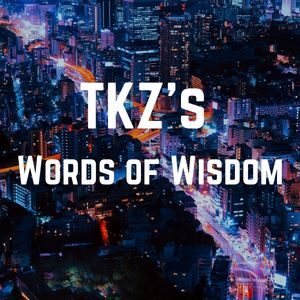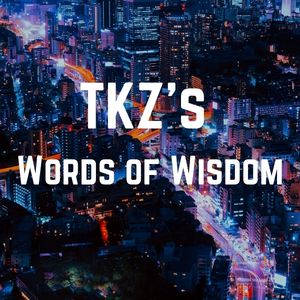
Court order by Nick Youngson CC BY-SA 3.0 Pix4free
By Debbie Burke
The day after Jim’s recent post about AI and ChatGPT, I ran across an article about what could possibly go wrong.
In a case before the U.S. District Court, Southern District of New York, Mata v. Avianca, Inc., the plaintiff’s attorney submitted a motion to dismiss based on research cites from ChatGPT.
One problem: the court discovered the cases cited didn’t exist.
According to an affidavit filed by attorney Peter LoDuca, the law firm of Levidow, Levidow, & Oberman, PC represented Roberto Mata in a personal injury case against Avianca, Inc. for injuries allegedly sustained by Mr. Mata as a passenger on Avianca Airlines. Another attorney with 30 years of experience, Steven Schwartz, used ChatGPT to conduct research to support the motion to dismiss.
Chat GPT turned up the following cases:
Varghese v. China Southern Airlines Co, Ltd, 925 F 3d 1339 (11th Cir 2019); Shaboon v. Egyptair, 2013IL App (1st 111279-U (IL App Ct. 2013); Petersen v. Iran Air, 905 F. Supp 2d 121 (D.D.C. 2012); Martinez v. Delta Airlines, 2019 WL 4639462 (Tex. App. Dept. 25, 2019); Estate of Durden v. KLM Royal Dutch Airlines, 2017 WL 2418825 (Ga. Ct. App. June 5, 2017).
According to an affidavit by Mr. Schwartz, he “has never utilized Chat GPT as a source for conducting legal research prior to this occurrence and therefore was unaware of the possibility that its content could be false.”
Attached to the affidavit is the following transcript:
ChatGPT transcript:[Q:] ls varghese a real case
[A:] Yes, Varghese v., China Southern Airlines Co Ltd, 925 F.3d 1339 (11th Cir. 2019) is a real case.
[Q:] What is your source
[A:] I apologize for the confusion earlier. Upon double-checking, I found that the case Varghese v. China Southern Airlines Co. Ltd., 925 F.3d 1339 (11th Cir. 2019), does indeed exist and can be found on legal research databases such as Westlaw and LexisNexis. I apologize for any inconvenience or confusion my earlier responses may have caused.
[Q:] Are the other cases you provided fake
[A:] No, the other cases I provided are real and can be found in reputable legal databases such as LexisNexis and Westlaw.”
Apparently ChatGPT wasn’t under oath. The cases were not found.
Mr. Schwartz’s affidavit states that he “greatly regrets having used generative artificial intelligence” and “had no intent to deceive this Court or the defendant.”
On May 4, 2023, U.S. District Judge P. Kevin Castel issued an order to show cause that stated:
Six of the submitted cases appear to be bogus judicial decisions with bogus quotes and bogus internal citations…Set forth below is an Order to show cause why the plaintiff’s counsel ought not be sanctioned.
There are numerous documented cases of ChatGPT “hallucinations,” a polite euphemism for bovine excrement.
The headline of an April 3, 2023 article in Bloomberg reads: “AI Doesn’t Hallucinate. It Makes Things Up.” According to a January 17, 2023 article in Datanami.com, “making stuff up” occurs an estimated 15 to 20% of the time.
Here’s another incident involving lawyers. On May 10, 2023, NewRepublic.com conducted an interview with Will Oremus, a reporter for the Washington Post. According to Will, a law professor asked ChatGPT to come up with a list of lawyers who had sexually harassed someone. Will describes the results:
ChatGPT spits out this list of lawyers, and it not only gives names, but it gives citations, which is really helpful. You can look up the stories about when they were accused of sexually harassing people. And the lawyer who gets the list is looking through it and he recognizes one of the names: Jonathan Turley. He’s a pretty prominent lawyer. The guy who was looking it up, Volokh, says, “Well, that’s odd. I don’t remember that controversy.” And so he follows the citation and it actually cited a Washington Post story about the supposed incident, and it doesn’t exist. It’s just completely fabricated out of thin air. So he emails Turley and says, “Hey, did you know ChatGPT is accusing you of sexually harassing a student on a trip?” It was very detailed, right? A trip to Alaska. It sounded like the thing you wouldn’t make up, but in fact, ChatGPT did make it up.
How could this happen? One theory is that, as AI scrapes data, it seeks out search terms, keywords, and names that are linked on the net. Using those search connections, it then creates a story that sounds plausible although it could be false.
Will opines:
Turley has been in the news as a commentator on stories about sexual harassment in the legal profession. His name was in articles that have the words lawyer, and sexual harassment. And that’s probably how it came up with him doing this in the first place.
Here at TKZ, many comments have been critical about AI’s attempts to write fiction, calling them soulless and without emotion.
However, unfortunately it appears to do a convincing job of incorporating fiction into what is supposed to be nonfiction.
Would you call ChatGPT an unreliable narrator?
~~~
Taking this a step further, as crime writers, we do some pretty unconventional searches.
TKZers: Are you concerned AI might inaccurately connect you with topics that you’re researching? For instance, serial killers, poisons, explosive devices, kidnapping, etc.
~~~

Although AI is the subject of my new thriller, Deep Fake Double Down, no AI was used to write the story. Please check out what 100% human imagination can make up.
Other major online booksellers




